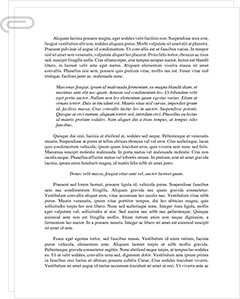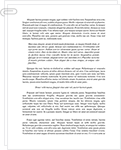 Study Document
Study Document
Anti-Asian American Sentiment During the COVID-19 Pandemic Term Paper
Pages:4 (1327 words)
Sources:4
Document Type:Term Paper
Document:#95708901
From the onset, it would be prudent to point out that Asians, as Croucher, Nguyen, and Rahmani point out, happen to be America’s fastest growing population. However, the said population also happens to be one of the populations most susceptible to discrimination. This is a fact that has clearly revealed itself during the COVID-19 pandemic where there have been reports of increased discrimination against Asian Americans. This text will largely concern itself with anti-Asian American sentiment during the present pandemic. In so doing, it will not only track the nature of the said discrimination, but also chart its consequences. It will also highlight some of the solutions that have been suggested in an attempt to reign in the said discrimination. The present discussion also demonstrates that the pandemic appears to be just but an excuse to continue a well-established trend of discrimination against Asian Americans.
As Strochlic points out, from the moment the COVID-19 pandemic hit the United States, Asian Americans started becoming the target of negative sentiments – with some people asserting that the virus had originated from their homeland. Harassment (and in some instances assault) started becoming a norm as the virus spread across the country and as an unproven theory that the virus had originated in a Chinese lab began to gain some credence. As a matter of fact, this unproven theory was pushed by, amongst other people, the President of the United States himself. As Strochlic observes, President Trump was quoted several times in the media referring to COVID-19 virus as the ‘Chinese flu’ and/or ‘China virus.’ In the words of Strochlic, “by April, an IPSOS poll found that three in 10 Americans blamed China or Chinese people for the virus.” According to Kandil and Yam, the repercussions of referring to COVID-19 as ‘China virus’ have been immense on diverse fronts (Kandil and Yam).
As Kandil and Yam observe, reports indicate that within the last one year, discrimination against Asian Americans has been on an upward trend. Indeed, by mid-July, as per data maintained by the Asian Pacific and Planning Council, close to 2,500 persons had already complained of being discriminated against (Kandil and Yam). Croucher, Nguyen, and Rahmani are of the opinion that discrimination against Asian Americans has taken a wide range of formats in recent times – specifically since the start of the COVID-19 pandemic. Towards this end, the authors note that most Asian Americans have been victims of wrongful dismissal at the workplace, verbal and physical intimidation, racial slurs, etc. Others, as the authors further point out have reported being spat on.
The repercussions/consequences of discrimination against Asian Americans could in some instances be severe. The most obvious consequence has been loss of employment. It is important to note that according to Kandil and Yam, Asian…
…strategies meant to reign in the said discrimination. To begin with, at the individual level, Balvaneda, Roemer, Hayes-Skeleton, Yang, and Ying suggest a number of strategies that those who have been exposed to racism and discrimination could utilize so as to cope. These include calling out racist comments if and when they occur and seeking support when discrimination start taking a toll on one’s mental or physical health and wellbeing.
At the community level, key strategies suggested by Balvaneda, Roemer, Hayes-Skeleton, Yang, and Ying involve holding together in solidarity and making use of the available resources at the community level. In holding together, an entire community opts to address challenges on this front by standing together and ensuring that it is not torn apart by negative sentiments. Some of the resources that have been suggested by the authors are inclusive of mutual aid networks and community care funds.
There is a lot that the authorities could do to reign in the well-established trend of discrimination against Asian Americans – particularly during the present pandemic. Essentially, there is need for elected officials to stop associating the virus with specific racial or ethnic groups. This is particularly important given that as Croucher, Nguyen, and Rahmani point out, government officials have been quoted, on numerous occasions, blaming and stigmatizing Asians for the spread of the novel coronavirus. Elected officials also ought to suggest policies meant to…
Related Documents
 Study Document
Study Document
Market Orientation and Worldview from Cultural Perspective
Dissertation ManuscriptBySedric K. MorganGeopolitical Awareness and Understanding of the Current Monetary Policies: A Quantitative Study� Northcentral University, 2019 Comment by Author: Sedric � NOTE: take a look at the Turnitin Analysis report. Consider the areas that are closely related to student paper(s) from University of Maryland. I highly suspect this is a matter of improper paraphrasing (by you as well as these other student(s)). The areas are sourced and the




